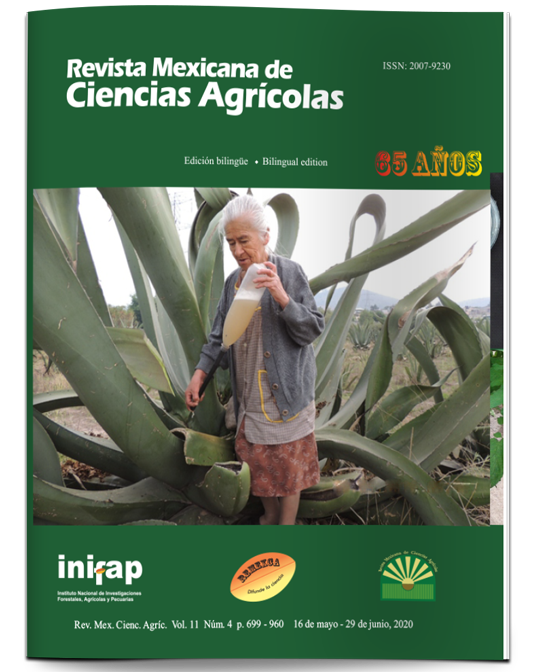Vegetation and habitat structure that determines the diet of insectivorous birds in agroforestry systems
DOI:
https://doi.org/10.29312/remexca.v11i4.2466Keywords:
birdlife, conservation, feeding, tree cover, systematic samplingAbstract
To define the vegetation and habitat structure in relation to the presence of birds and prey from August (2018) to January (2019), the monitoring of birds, vegetation and insects was carried out, using counting at points with a fixed radius; intensive search; cut and shake of branches, Canfield lines, quadrants with center point and closest neighbor. Observation frequency (FO) and relative abundance index (IAR) were determined. Kruskal wallis and X2 analyzes were carried out to determine differences and determine if what was recorded is expected. To assess association between habitat and vegetation in relation to the presence of birds and insects, a Poisson regression analysis (ARP) was applied. To know the degree of inertia between habitat and vegetation in response to the presence of birds and insects, canonical correspondence analysis (ACC) was developed. The FO indicates high values for: Birds Melanerpes aurifrons, Cyanocorax morio and Empidonax sp.; Poaceae, Selaginellaceae and Verbenaceae vegetation; insects Plecia nearctica and Chauliognathus pensylvanicus. The IAR indicates high values for: Poaceae, Selaginellaceae and Verbenaceae vegetation; insects Plecia nearctica and Chauliognathus pensylvanicus. Kruskal wallis without differences and X2 that what is registered is expected. The ARP suggests an AIC= 283.65; 219.4; 240.38. The ACC shows an inertia of 66.26%; 78.54%; 93.89% and 84.62%. Vegetation and habitat structure are determining factors in the abundance of birds, they have a food stock that guarantees the conservation and ecological balance of agroforestry systems.
Downloads
Published
How to Cite
Issue
Section
License
Copyright (c) 2020 Revista Mexicana de Ciencias Agrícolas

This work is licensed under a Creative Commons Attribution-NonCommercial 4.0 International License.
The authors who publish in Revista Mexicana de Ciencias Agrícolas accept the following conditions:
In accordance with copyright laws, Revista Mexicana de Ciencias Agrícolas recognizes and respects the authors’ moral right and ownership of property rights which will be transferred to the journal for dissemination in open access. Invariably, all the authors have to sign a letter of transfer of property rights and of originality of the article to Instituto Nacional de Investigaciones Forestales, Agrícolas y Pecuarias (INIFAP) [National Institute of Forestry, Agricultural and Livestock Research]. The author(s) must pay a fee for the reception of articles before proceeding to editorial review.
All the texts published by Revista Mexicana de Ciencias Agrícolas —with no exception— are distributed under a Creative Commons License Attribution-NonCommercial 4.0 International (CC BY-NC 4.0), which allows third parties to use the publication as long as the work’s authorship and its first publication in this journal are mentioned.
The author(s) can enter into independent and additional contractual agreements for the nonexclusive distribution of the version of the article published in Revista Mexicana de Ciencias Agrícolas (for example include it into an institutional repository or publish it in a book) as long as it is clearly and explicitly indicated that the work was published for the first time in Revista Mexicana de Ciencias Agrícolas.
For all the above, the authors shall send the Letter-transfer of Property Rights for the first publication duly filled in and signed by the author(s). This form must be sent as a PDF file to: revista_atm@yahoo.com.mx; cienciasagricola@inifap.gob.mx; remexca2017@gmail.
This work is licensed under a Creative Commons Attribution-Noncommercial 4.0 International license.



